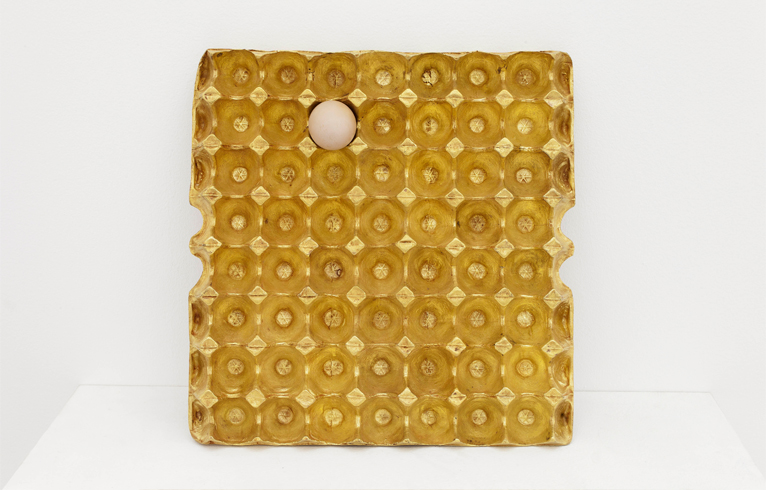HE XIANGYU
| November 21, 2012 | Post In LEAP 17

Compared to his “Cola Project” and “Man on the Chairs,” He Xiangyu’s newest solo exhibition presents the persona of a big kid born in 1986: one who loves collecting objets d’art but does not feel obligated toward historical cultural heritage; one who is not a bit serious but rather carefree; and one who shows aptitude in certain specific areas but is not keen on chasing after some general grand idea. Most importantly, it shows an unrestrained, easygoing instinct.
Many pieces in this exhibition display this relaxed, amused, almost mischievous humor. Take the door with the handle made of a light bulb— it brings to mind the pranks and practical jokes in movies like Home Alone. It powers up to light the bulb and delivers a shock to the hand that tries to open it. The piece is appropriately called “Sorry.” In reality, that seemingly common door is not so humble. It is spray-painted stainless steel. It pretends to be ordinary. This attempt to simulate daily ordinariness is to demonstrate the chasm between appearance and inner quality, empiricism and rationalism. The audience’s reason is dashed. Of course, this is the fountainhead of comedy, especially when the audience recalls the time their intellectual judgment failed them.
However, He Xiangyu’s works are overly reliant on the surprise effect the materials bring, for example: Reply, the letter written with methamphetamine; The End, the ivory handcuff; 200 Grams of Gold, 62 Grams of Protein, the gilded bronze egg carton. All use expensive materials for low-level products. The sharper the contrast between material and function, the more explicit the concept, the poorer the perceptive experience. After their auteur’s intent is read through, these artworks have completed their mission.
In comparison, by avoiding the symbolism of materials, One Grain creates capacity for new experiences. He Xiangyu plans to write every name he comes across— historical figures, people he meets in life, a name he hears mentioned by others—as long as it is the name of a person— on a grain of rice. It is said he has already written tens of thousands of grains of rice. Here, rice as a material brings a monument to the common, not a spectacle of material.
Two of the most significant works in this exhibition indicate that the young artist He Xiangyu is in a state of transition. The 900 porcelain bowls continue the train of thought that began with “Man on the Chairs.” But My Pipe Dream points in a new direction. A life-like cadre lying flat covered with a red flag evidently feigns to be a certain kind of funeral. The face resembles the artist, except it is slightly smaller than the real person, its expression vivid and serene. While the viewer feels uneasy and uncertain— is it a fantasy or a mockery? — on five screens nearby “My Dream” plays quietly inexplicable dust floating in darkness. Bao Dong (Translated by Yvette Zhu)


